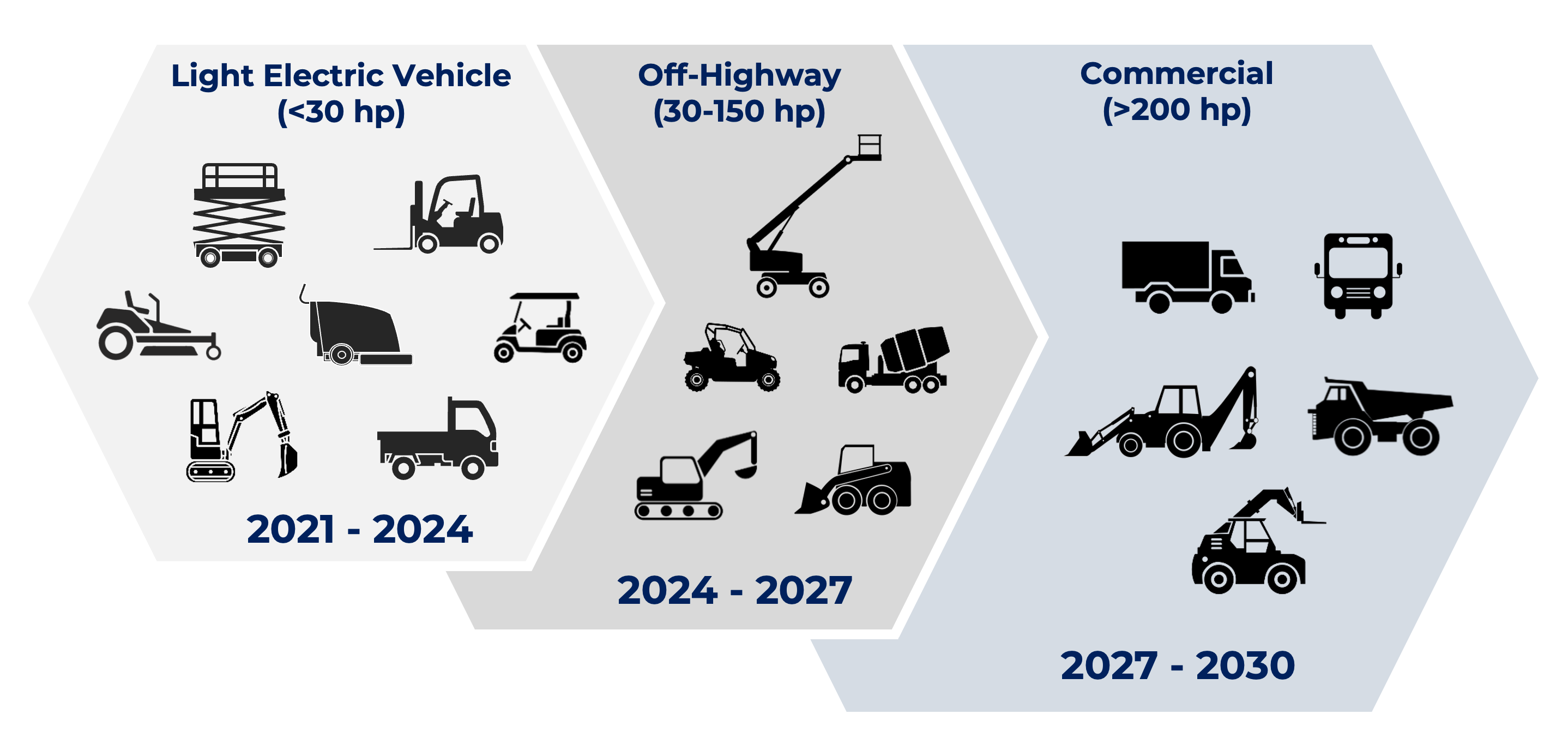The off-highway equipment sector is quickly adopting electrification because of regulatory pressures and the demand for sustainability. Though slower than different sectors, this transition presents a novel alternative to implement confirmed applied sciences.
A generational strategy to electrification
The evolution of electrification in different sectors gives a roadmap for the off-highway {industry}. Early electrical forklifts and indoor equipment paved the best way for contemporary passenger EVs, proving emissions-free options in demanding environments. This sample is now repeating, with off-highway electrification benefiting from mature electrical applied sciences developed in different sectors.
A 3-part “generational mannequin” for electrification may be noticed:
- Era 1: Preliminary designs utilizing commonplace components from different industries to create an electrical drivetrain.
- Era 1.5: An iterative part refining designs to reinforce efficiency, cut back prices, and delegate extra duties to suppliers.
- Era 2: Full maturity, the place third-party integrators handle optimized subsystems, permitting OEMs to give attention to market-specific customization and seamless integration.
The final word objective is totally built-in drivetrains, the place every part works in concord for optimum effectivity.
The essential function of charging options
Deciding on the correct charging resolution is essential for attaining an built-in future for electrified equipment. A charger tailor-made to the precise machine software will enhance battery effectivity, security, and lifespan. On condition that the battery is usually the costliest part, defending and maximizing its worth by way of the correct charger is essential.
On-board charging options bridge the hole between a machine’s battery and various charging infrastructures. Nevertheless, it’s essential to think about each on-board and off-board charging options, sizing the charger primarily based on accessible connections, battery cost charges, and the working setting.
Electrification tendencies and market components
Autos are main contributors to greenhouse gasoline emissions, making electrification a key resolution. The transition to electrical autos (EVs) is going on throughout varied sectors, together with industrial, off-highway, and automotive.
The off-highway sector is projected to see elevated adoption of electrification from 2024-2027. A useful case examine may be discovered within the materials dealing with sector, the place electrical forklift gross sales have surged by 140%, in comparison with solely a 14% improve in inner combustion (IC) forklifts.
This development is pushed by a number of components:
- Decrease working prices
- Lowered upkeep
- Elevated productiveness
- Enhanced operator consolation
- Laws just like the CARB IC forklift ban
Whereas increased upfront prices and charging infrastructure stay hurdles, the market is clearly shifting in the direction of electrical options.

Rising applied sciences and real-world softwares
A number of applied sciences are reworking electrification:
- Gallium Nitride (GaN) and Silicon Carbide (SiC) are enhancing energy electronics by minimizing losses and boosting efficiency.
- Lithium batteries supply increased power density and integration capabilities for industrial equipment.
- Battery administration techniques (BMS) enhance security, present upkeep insights, and optimize charging profiles.
- CAN bus protocols allow distant fleet monitoring and administration, streamlining operations and lowering downtime.
Overcoming challenges by way of integration and collaboration
Built-in electrical drivetrains differ from inner combustion engines, the place every part enhances the efficiency of the others. This interconnectedness requires OEMs to steadiness flexibility and price effectivity.
- Non-integrated setups: Provide flexibility however incur increased upfront prices.
- Absolutely built-in options: Are cost-optimized however lack flexibility for impartial upgrades.
The secret’s strategic collaboration with electrification consultants. By leveraging cross-industry insights and provide networks, OEMs can develop tailor-made electrified options. Participating suppliers early within the design course of ensures manufacturable specs and sensible efficiency expectations.
ZAPI Group are system integration specialists and have a extremely built-in product portfolio, together with:
- Movement controllers
- Electrical motors
- Excessive-frequency battery chargers
- Autonomous navigation software program for full-electric and hybrid functions

Electrification: A necessity for the off-highway equipment sector
Electrification is not non-obligatory for the off-highway equipment sector; it’s a regulatory and operational necessity. Because the {industry} strikes towards totally built-in options, early collaboration with electrification consultants is crucial for a seamless transition to an all-electric future.
Electrification is not only about powering equipment; it’s about powering progress. OEMs that embrace these applied sciences with the correct companions will prepared the ground. The off-highway sector can leverage the progress made in established ecosystems just like the Materials Dealing with {industry}.
The fourth digital Way forward for Electrification convention, going down 26-27 February, 2025, will discover these themes and extra. Registration is free and open to all iVT Worldwide readers.


